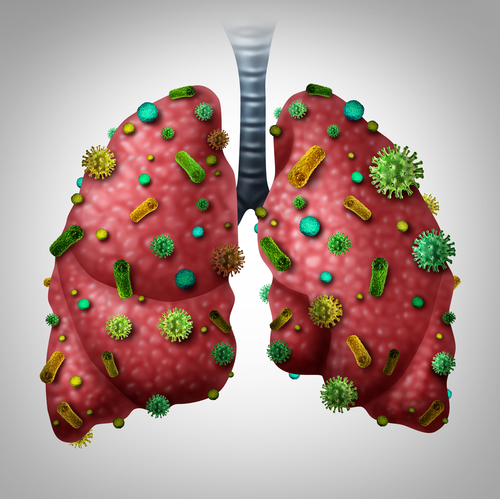NTM Infection Rate in Young CF Patients in UK Remains Stable But High, Study Finds
Written by |

The frequency of nontuberculous mycobacteria (NTM) infections in children and adolescents with cystic fibrosis (CF) in the U.K. remained stable from 2016 to 2018, but substantially higher than at the start of the decade, according to a recent study.
Data also showed that allergic bronchopulmonary aspergillosis (ABPA) — an exaggerated immune response to Aspergillus fungi — and Pseudomonas aeruginosa bacteria were the strongest risk factors of NTM infection.
These findings highlight the urgent need for further studies and well-designed trials to determine the most effective strategies to manage NTM infection in this young patient population, the researchers said.
The study, “Trends in nontuberculous mycobacteria infection in children and young people with cystic fibrosis,” was published in the Journal of Cystic Fibrosis.
The characteristic buildup of thick mucus in the lungs of people with CF increases patients’ vulnerability to respiratory infections, including those caused by opportunistic NTM — a set of more than 160 species of bacteria found naturally in the environment.
NTM are increasingly being recognized as common and worrisome infectious agents in people with CF. Research has found that infections caused by NTM are therapeutically challenging, and often become chronic.
Notably, Mycobacterium abscessus, a highly treatment-resistant NTM that causes very aggressive and hard-to-treat lung infections, has been associated with a greater lung function decline and is often a contraindication to lung transplant in CF patients.
However, there is limited data on the frequency and risk factors of NTM infection in children and adolescents with CF, and most treatment strategies remain based on data from adults with the progressive disease.
As such, there is an unmet need for high-quality studies to help improve the prevention, management, and treatment of NTM in young people with CF.
In a previous study, a team of researchers from the Translational and Clinical Research Institute and the Great North Children’s Hospital, both in Newcastle, showed that the occurrence of NTM infection in the U.K. pediatric CF population increased every year from 2010 (1.3%) to 2015 (3.8%).
Now, the same team set out to evaluate the most recent trends of NTM infection in this patient population, as well as its potential risk factors, using the latest data from the U.K. Cystic Fibrosis Registry (2016–2018).
The CF Registry, managed by the Cystic Fibrosis Trust, collects data on people in England, Wales, Scotland, and Northern Ireland who have the disease.
The team retrospectively analyzed the demographic and clinical data of 4,687 CF patients, ages 16 and younger, between 2016 and 2018.
Results showed that 303 (6.5%) of them tested positive for the presence of NTM in their lungs at least once during that period, and that the most common NTM species found were M. abscessus (58.1%) and M. avium (30.4%). A total of 17 patients tested positive for both of these species.
The annual frequency of NTM infection in these patients remained stable between 2016 and 2018 — at rates of 3.5% in 2016, 3.1% in 2017, and 3.6% in 2018. The rates of infections caused by M. abscessus and M. avium also remained similar over these years.
“Prevalence of infection stabilized in the pediatric age-group during this period but remained substantially higher than in 2010,” when the prevalence was 1.3%, the researchers wrote.
The scientists hypothesized that the higher frequency of NTM infection in young CF patients may be due to improved screening and infection control measures, environmental factors (which were not assessed in this study), and the potential person-to-person transmission of M. abscessus.
Further analyses highlighted that ABPA, chronic and intermittent infections with the antibiotic-resistant P. aeruginosa, older age, and poorer lung function also were associated with NTM infection.
ABPA increased the risk of NTM infection by nearly three-times. P. aeruginosa infection was associated with a nearly two-fold higher risk, and older age and poorer lung function with smaller risks. These risk factors and associations were generally consistent with those reported in the previous study with data from 2010 to 2015.
The team noted that further studies are needed to better understand the underlying mechanisms of these associations. Research also is needed to clarify whether immunosuppressive treatment for ABPA may increase patients’ susceptibility to NTM infection and whether P. aeruginosa, Aspergillus, and NTM interact with each other.
Based on the results, the team concluded that “the prevalence of NTM in children and young people with CF in the UK is now substantially higher than it was in 2010.”
“Although levels appear to have plateaued latterly this remains far from reassuring and emphasizes the urgent need for well-designed trials to establish the most effective management strategies for NTM infection in children and young people with CF,” they wrote.






